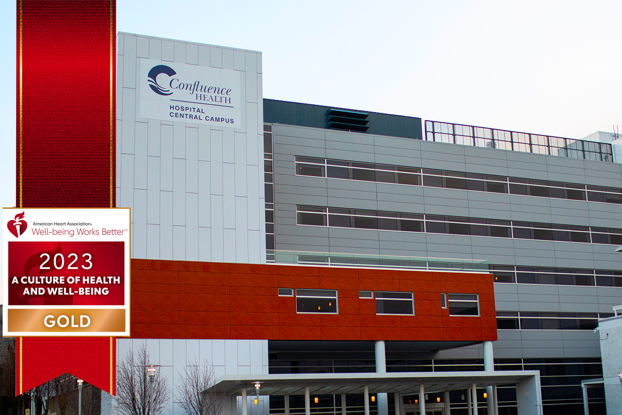Preparing for the Flu Season is a Community Effort.
- Category: Blog
- Posted On:
- Written By: M.D. Johnson, MD, MTM&H - CH Infectious Diseases Physician
The COVID pandemic has drastically affected all our lives over the last 8 months, and while currently the disease is at a lower level than it has been, it is not yet over and what we as individual members of our communities do regarding social distancing, masking, staying home if ill, and hopefully soon a vaccine will determine how soon we come out of this. But COVID is not the only respiratory viral infection we need to be concerned about. It is important now to remember that we are about to head into influenza (flu) season which typically runs from November to April every year. As we spend more time indoors during the dark and cold winter season, both COVID-19 and flu have the potential to make us sick, be hospitalized or infrequently die, and it will be essentially impossible to differentiate between these two illnesses by symptoms alone. We can get prepared for the flu though, and now is the time to get your seasonal flu vaccine. We can also begin preparing for a COVID-19 vaccine by learning about them, their benefits and risks, so each of us is prepared to get vaccinated once a vaccine is available that is proven safe and effective, relative to the risks of getting infected with COVID.
The only predictable thing about influenza is that it is unpredictable. What will be the viral subtype, when will it appear in the community, how will individual immune systems respond to it, how sick will people get, how long will it be in the community? Unlike other viruses that we have vaccines for that confer long-term immunity (eg. Measles), the flu virus genetically changes a little bit every year. As a result, there are always going to be flu outbreaks every single winter, and a new vaccine must be given every year to provide the best possible protection. Because seasonal flu happens every year, we are accustomed to the notion of Influenza, and it’s easy to underestimate its severity. While flu tends to be more severe especially amongst the very young, the very old, pregnant women, and individuals with impaired immune systems or underlying lung disease, severe disease can and does happen to anyone. During last year’s flu season across the U.S. (with about 40% of the population getting vaccinated and hence with some level of immunity), about 38 million people became ill with influenza, 404,000 were sick enough to be hospitalized, and about 22,000 people died from the flu. The 2019-2020 flu season was considered moderate in severity and was probably somewhat reduced in severity during March and April 2020 because of evolving COVID-19 precautions. The flu vaccines currently in use do not have any preservatives and they don’t contain any live influenza virus, so it is impossible to get the flu from the vaccine. Your immune system’s response to the vaccine can generate some short-lived low-grade fevers and body aches that last a few days. This is a normal response to the vaccine, and shows your immune system is responding to the vaccine.
Different than influenza, where people infected and contagious are for the most part symptomatic, up to 45% of infections by SARS-CoV-2 (the virus that causes COVID-19 disease) are asymptomatic and very likely contagious. For COVID-19 the mortality rate is about 10X greater than Influenza overall. Older age groups or those with certain chronic diseases are at significantly increased risk of death due to COVID-19. With COVID, many of those infected but recover experience fatigue, cough, and shortness of breath for a long period of time even after mild illness. For example, amongst adults aged 18-34 years old with no chronic medical conditions, 20% had significant ongoing symptoms 3 weeks after disease onset. Symptoms of COVID-19 are very similar to flu, including fever or chills, cough, shortness of breath, fatigue, muscle or body aches, headaches, sore throat, congestion or runny nose, nausea or vomiting, diarrhea, as well loss of taste or smell. During this coming flu season, it will be important to distinguish between Influenza and COVID-19, and nasal swab testing will be needed for that. People with symptoms will be tested for both illnesses.
In addition to getting your seasonal flu vaccine now, if we want to significantly reduce the presence of COVID-19 in our region it will be necessary for all of us to be vaccinated against COVID-19 once a safe and effective vaccine is available. We all eagerly await results of ongoing clinical trials of several COVID-19 vaccine candidates. Confluence Health is one of many international locations testing a COVID-19 vaccine candidate developed by Pfizer and its partner BioNTech. Since early August, 179 local volunteers were enrolled. Many were health care providers, public-facing essential employees, or older individuals with underlying medical problems, all ethnicities are included. The vast majority of these volunteers had never participated in a research trial before, but they enthusiastically rolled up their sleeves to receive two injections of either the vaccine candidate or a placebo, and they will be followed to see whether the vaccine provided some protection against infection, and if any side effects occurred. Many of these volunteers participated because they want an end to this pandemic, and an effective vaccine is a critical tool to help us get there. Synthetic antibodies specifically targeted against COVID-19 (recombinant monoclonal antibodies) have also been developed —one made by Regeneron (given to President Trump on 10/01/2020) and one by Eli Lilly—that are currently being evaluated in Phase 3 clinical trials now to identify whether certain high risk populations might benefit from infusion of these antibodies as a shorter-term protection against infection until a vaccine is available.
There are several COVID-19 vaccine candidates that are now in Phase 3, placebo-controlled, clinical trials. Half the individuals get the vaccine shot; half get a shot of salt water. These are large international studies of more than 30,000 participants each. Some use one shot, some use two shots a couple weeks apart. It is very likely that more than one of these vaccines will prove to be safe and effective. One vaccine manufacturer will only be able to make 1-2 billion vaccine doses, so we’ll need more than one vaccine candidate to be proven safe and vaccinate everyone, and in order to ensure herd immunity develops, well more than 70% of the population will need to be vaccinated. The vaccine candidates being evaluated in clinical trials used existing vaccine platforms, which allowed these to move forward with record efficiency. None of the vaccines listed above contain any live or dead whole COVID-19 virus, so there will be no risk of getting COVID-19 from the vaccines. These are different than Measles and some Polio vaccines which do have live but disabled virus in them. Some of the vaccine candidates furthest along include:
- mRNA vaccines. A specific non-infectious part of viral genetic material is injected and is converted into non-infectious viral protein components within an immunized person. That person’s immune system recognizes this protein as foreign, generating a specific immune response to that reduces the chance of future infection and illness.
- Moderna mRNA: Phase 3 clinical trial started on 7/27/2020.
- Pfizer/BioNTech mRNA vaccine: Phase 3 clinical trial started on 7/27/2020.
- Viral Vector vaccines. These vaccines put the piece of the genetic material of the COVID-19 causing virus into another inactivated viral particle that does not cause significant human disease and gets the genetic material into human cells that way. Non-infectious viral protein components are produced, and the person’s immune system generates a protective immune response to the viral protein parts.
- AstraZeneca ChAdOx1 vaccine: began enrolling Phase 3 clinical trial in the U.S. in August.
- Johnson&Johnson/Janssen vaccine: began enrolling Phase 3 clinical trial on 23Sept2020, and will plan to enroll more than 60,000 patients around the world.
- Merck vaccines (2): Phase 3 clinical trial starting soon.
- Protein subunit vaccines. These vaccines contain synthetically manufactured proteins from the outer part of the virus, that are injected, and the body recognizes them as foreign and generates a protective immune response. This is similar to how many flu vaccines work today.
- Novovax Phase 3 clinical trial began on 24Sept2020.
Before these vaccines can be recommended, we of course need to ensure that they are safe and effective. The initial clinical trials (eg. Phase 1 and 2) demonstrated that those immunized had robust antibody production against COVID -19 which typically is associated with protective immunity, but it is only through the larger Phase 3 clinical trials assessing for protection from infection after immunization that can lead to authorization by the FDA to make any of these potential vaccines available to you. The trials will also attempt to measure how long subsequent protective immunity lasts; does it give lifetime or time-limited (eg. 1-2 years) immunity? The safety of the vaccines is being evaluated by several groups of people. First, the vaccine manufacturer, and their corporate reputation is clearly on the line. The Infectious Diseases Society of America, whose members are the Infectious Disease specialist physicians in the United States, will review the data as it is available and give their recommendations. There are also safety and ethical review boards associated with each trial, continuously reviewing the data to see if it is safe to continue the trial. It is normal for vaccine trials to be intermittently stopped at any time to review the data and ensure safety.
A large concern is that some Americans may decline to receive a safe and effective COVID-19 vaccine when available. If this occurs, we will undoubtedly be unable to get this pandemic under control, continuing to cause the economic, emotional, and physical disruption we have all been living with since February. It will continue to lead to otherwise preventable deaths. We will continue to stress or at times overwhelm hospitals, which limits necessary but not emergent health care for other health conditions.
Prevention remains the best treatment for COVID-19, and until a safe and effective COVID-19 vaccine is available, it is critical to continue to wear your masks, socially distance when possible, wash your hands frequently, get the Flu vaccine now, and get tested for COVID-19 and/or Influenza should you develop symptoms consistent with either or have a household, occupational, or high-risk community exposure.
We as a region have come a long way in our understanding of COVID-19 since February, and we can get through this with the minimum of further disruption, if we all contribute our part.
M.D. Johnson, MD, MTM&H
Infectious Diseases Physician

